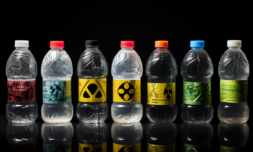A growing number of studies are finding microplastics inside the testicles of humans and dogs. Scientists anticipate this has repercussions for fertility and reproduction.
Plastics are now permanently ingrained in modern life. They’re used in almost every industry, and now, tiny invisible plastic particles are making a home inside our bodies.
Microplastics have been found in the human bloodstream, brain, and lungs. They’ve even been found in placentas, but there is simply no way to avoid them. Acts of keeping ourselves alive, including drinking, eating, and breathing, are all ways we consume microplastics unknowingly.
Food containers shed microplastics onto our food and microplastics shed from our clothing and single-use beverage bottles we purchase regularly. Car tyres, for example, shed microplastics that fly in the air we breathe as we stroll down the street.
Now, they’ve been found in men’s reproductive organs.
Building off a small study completed in China last year which discovered microplastics in human testicles and semen, a new study published this month in the Journal of Toxicological Sciences has found that microplastics are building up in the testicles of humans and dogs.
It questions the health implications of these particles in the reproductive system of animals, including humans.
#microplastics in the #placenta?🤰
New study found all #placenta samples containing #microplastics with concentrations ranging from 6.5 to 790 micrograms per gram of #tissue!
What is the #harm?
Ref📚https://t.co/R4fpf2frnHhttps://t.co/5xlQDj0T0o pic.twitter.com/ewhf0WEekS
— Women’s Health Under The Microscope (@whum_cam_uni) May 16, 2024





















